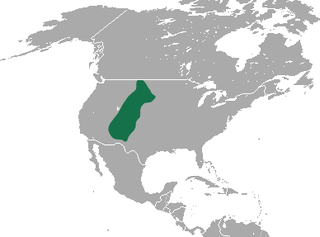
The family Talpidae includes the moles, shrew moles, desmans, and other intermediate forms of small insectivorous mammals of the order Eulipotyphla. Talpids are all digging animals to various degrees: moles are completely subterranean animals; shrew moles and shrew-like moles somewhat less so; and desmans, while basically aquatic, excavate dry sleeping chambers; whilst the quite unique star-nosed mole is equally adept in the water and underground. Talpids are found across the Northern Hemisphere and southern Asia, Europe, and North America, although none are found in Ireland nor in the Americas south of northern Mexico.

The red-toothed shrews of the subfamily Soricinae are one of three living subfamilies of shrews, along with Crocidurinae and Myosoricinae. In addition, the family contains the extinct subfamilies Limnoecinae, Crocidosoricinae, Allosoricinae and Heterosoricinae. These species are typically found in North America, northern South America, Europe and northern Asia. The enamel of the tips of their teeth is reddish due to iron pigment. The iron deposits serve to harden the enamel and are concentrated in those parts of the teeth most subject to wear.

Crawford's gray shrew also known as the desert shrew, is a small shrew found in the southwestern United States and northern Mexico. It is a member of the family Soricidae of the order Eulipotyphla. It was the only known member of the genus Notiosorex until two species, N. villai distributed in Tamaulipas, Mexico, and N. evotis distributed along the northwest coast of Mexico, were named. A fourth distinct species, N. cockrumi, was discovered in Arizona and named in 2004.
Roosmalen's dwarf porcupine, Coendou roosmalenorum, is a porcupine species from the New World porcupine family likely endemic to northern Brazil. Only three specimens were known at the time, and only one had a collection locality. It is named for Marc van Roosmalen and his son Tomas, whose collections from the middle Madeira included the first known specimens. It was soon assigned to the genus Sphiggurus, although this genus was not recognized by the authors. Genetic studies in 2013 have since showed Sphiggurus to be polyphyletic. Nonetheless it is commonly classified as Sphiggurus roosmalenorum. Coendou roosmalenorum may be misspelled due to a conflicting basionym combination.

Ficus retusa is a species of evergreen woody plant in the fig genus, native to the Malay Archipelago and Malesia floristic region. The species name has been widely mis-applied to Ficus microcarpa.
Cyclostremellini is a minor tribe, a taxonomic grouping, of minute sea snails, marine gastropod mollusks or micromollusks, in the family Pyramidellidae, the pyrams and their allies.

Notiosorex cockrumi, also called Cockrum's gray shrew or Cockrum's desert shrew, is a tiny species of shrews named in 2003. This red-toothed shrew, which is as light as a penny, is the first new mammal species from Arizona since 1977. Its range extends from Arizona to central Sonora, Mexico.

Notiosorex is a genus of shrew from the subfamily Soricinae.

The large-eared gray shrew is a species of shrew.

Villa's gray shrew is a shrew native to northeastern Mexico, where it is called musaraña.

The Mexican shrew is a species of mammal from the subfamily Soricinae in the family Soricidae. It is monotypic within the genus Megasorex and is endemic to Mexico.

The dwarf shrew is a species of mammal in the family Soricidae endemic to Arizona, Colorado, Montana, Nebraska, New Mexico, South Dakota, Utah, and Wyoming in the United States. The type locality is Estes Park, Colorado, USA.

Epomophorus is a genus of bat in the family Pteropodidae. They have a distribution throughout Africa.

The Didelphinae are a subfamily of opossums consisting of 15 genera and 98 species, one of them extinct. Specimens have been collected throughout the Americas, but are predominant in South and Central America.

The Veronicellidae, also known by their common name the leatherleaf slugs, are a family of pulmonate terrestrial slugs.
A unicuspid is a tooth that has only one cusp.
Notiosorex harrisi is an extinct species of shrew from the subfamily Soricinae.













